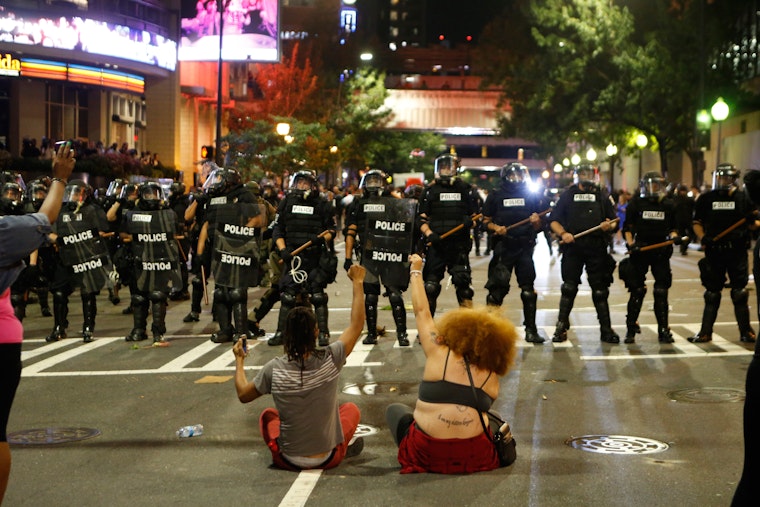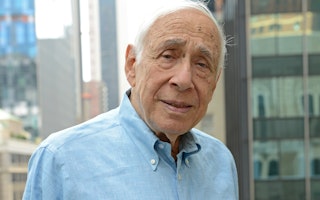Q&A: The Problem with Charlotte’s Police

Ian Mance, a staff attorney with the Southern Coalition for Social Justice and a 2013 Soros Justice Fellow, has done extensive work studying data on race and policing in North Carolina. He spoke to Thomas Watson, senior editorial advisor, about the situation in Charlotte, where the police shot and killed 43-year-old Keith Scott, a black man, triggering several days of protest.
What can you tell us about the state of relations between law enforcement and the community in Charlotte prior to the tragic police shooting of Keith Lamont Scott?
There’s been a great deal of frustration in the community for a number of years about the lack of accountability for police officers who break the law. The shooting of Jonathan Ferrell, who was killed by a police officer a few years ago while seeking help following a car accident, still looms large. The trial of the officer who killed Ferrell ended in a hung jury, and the state decided not to retry the case.
That same year, community members succeeded in pushing the city council to make changes to the local Civilian Police Review Board, which had never ruled in favor of a complainant. But those changes haven’t resulted in the sort of accountability the community was looking for.
The department has made a more concerted effort in recent years to improve community outreach, particularly in the city’s African American community, but its efforts haven’t been enough to earn the benefit of the doubt in a situation like this.
Why do you think Mr. Scott’s death resonated so powerfully in Charlotte?
It’s a confluence of factors. This is the sixth police shooting in Charlotte this year. It comes on the heels of the shooting last month of Daniel Harris, who was deaf and unarmed. Mr. Scott appears to have been well known and liked in his neighborhood, and he was killed while waiting for his child at the bus stop, something he apparently did every day. He was not suspected of any crime.
There are competing narratives about whether he had a gun. We just don’t know at this point. But even if he did, North Carolina is an open carry state, and there’s been no allegation that he ever raised it. Our courts have said that the act of carrying a handgun, by itself, doesn’t provide police a lawful basis to search—much less shoot—a person. So there’s a strong sense, I think particularly in the wake of the Philando Castile shooting in Minnesota, that there’s a real double standard at work—that the right to bear arms, which dominates so much of our political discourse, doesn’t extend to African Americans.
Beyond that, despite its image as a relatively prosperous city, Charlotte is among the worst cities in the country in terms of social mobility for African Americans. It also suffers from extremely disproportionate patterns of policing in everything from traffic stops to low-level drug arrests. These have long been a source of community tension. Blacks make up about a third of the population, but more than half of those stopped and three-quarters of those searched by the police every year.
How do you expect the Charlotte police to handle this situation?
There’s certainly reason to be concerned. When it comes to issues of transparency and accountability, Charlotte has lagged behind the other large departments in the state—both in terms of opening up its data and embracing practices and technologies (like our Open Data Policing platform)—that other departments have used to identify problem officers and enhance accountability.
Just last year, the Charlotte-Mecklenburg Police Department proposed creating “public safety zones”—entire areas of the city in which people with criminal records would be prohibited from entering under penalty of arrest. The police chief continued to push this plan despite the warnings of his own attorneys that it faces “significant constitutional hurdles.”
How can the kind of statistical research you’re doing help police departments improve practices? Can you point to a positive model that Charlotte might follow?
Much of our efforts at the Southern Coalition have revolved around data analytics—drawing on information collected under North Carolina’s unique data collection law to try and understand how different communities are being policed at the micro and macro level. We’ve partnered with a number of police departments to develop mechanisms for identifying those individual officers whose stop, search, and use-of-force patterns of enforcement appear at odds with what we’d expect to see given neighborhood demographics. CMPD, which consistently posts some of the most racialized enforcement numbers in the entire state, has declined to participate.
None of our initiatives, of course, would have prevented Mr. Scott’s death. But we know from the recent experiences of a place like Fayetteville, which has had its own police-involved shootings and a history of controversies around race and policing, that when a department makes a concerted effort to embrace a culture of transparency and accountability and responsiveness to community, it can go a long way when a situation like this arises.

